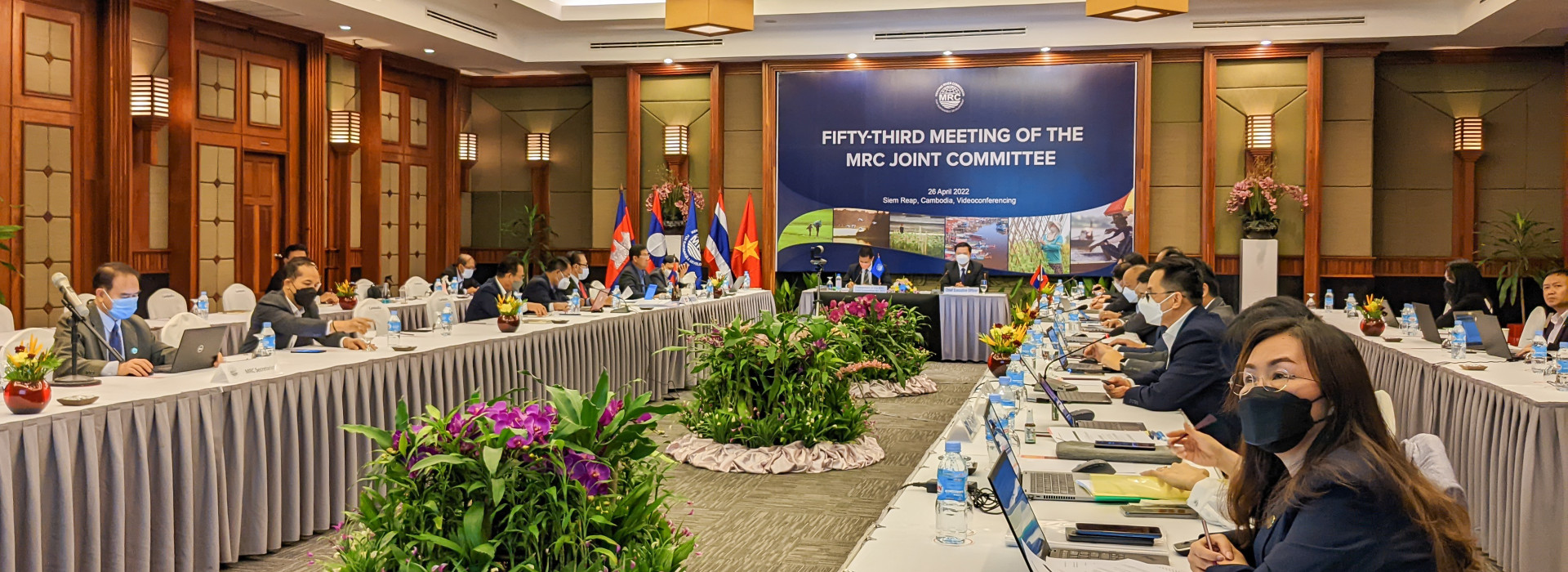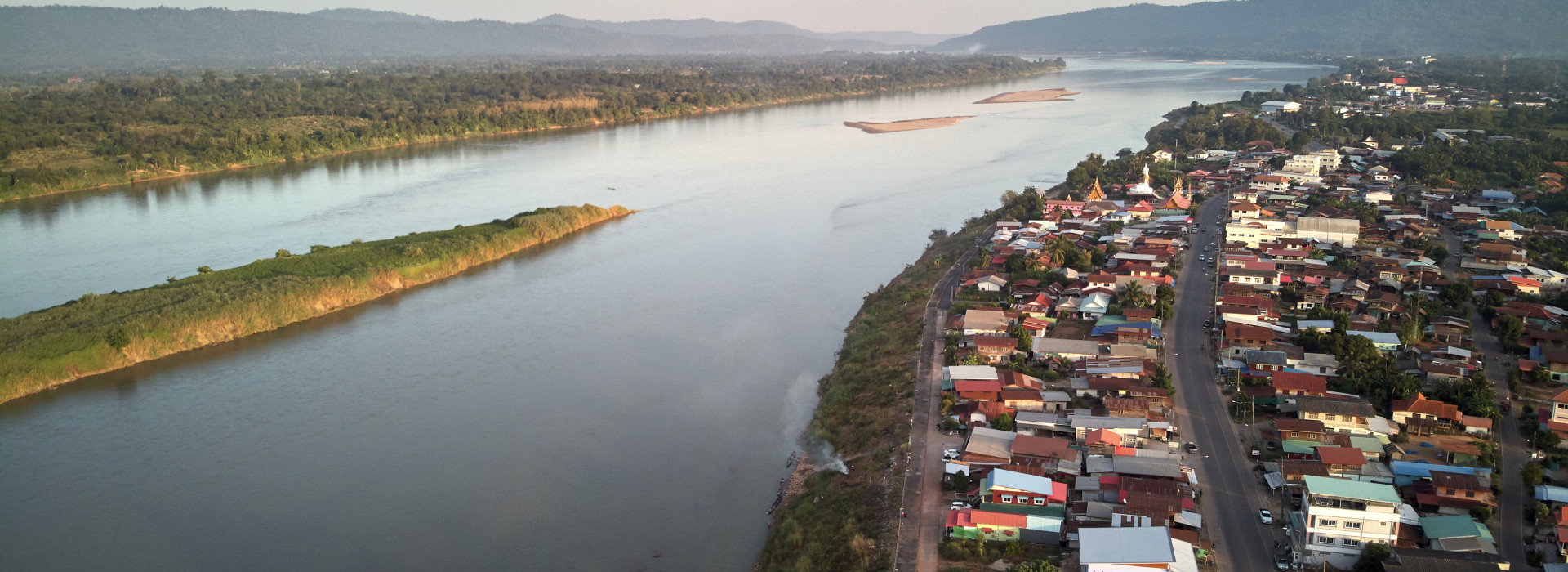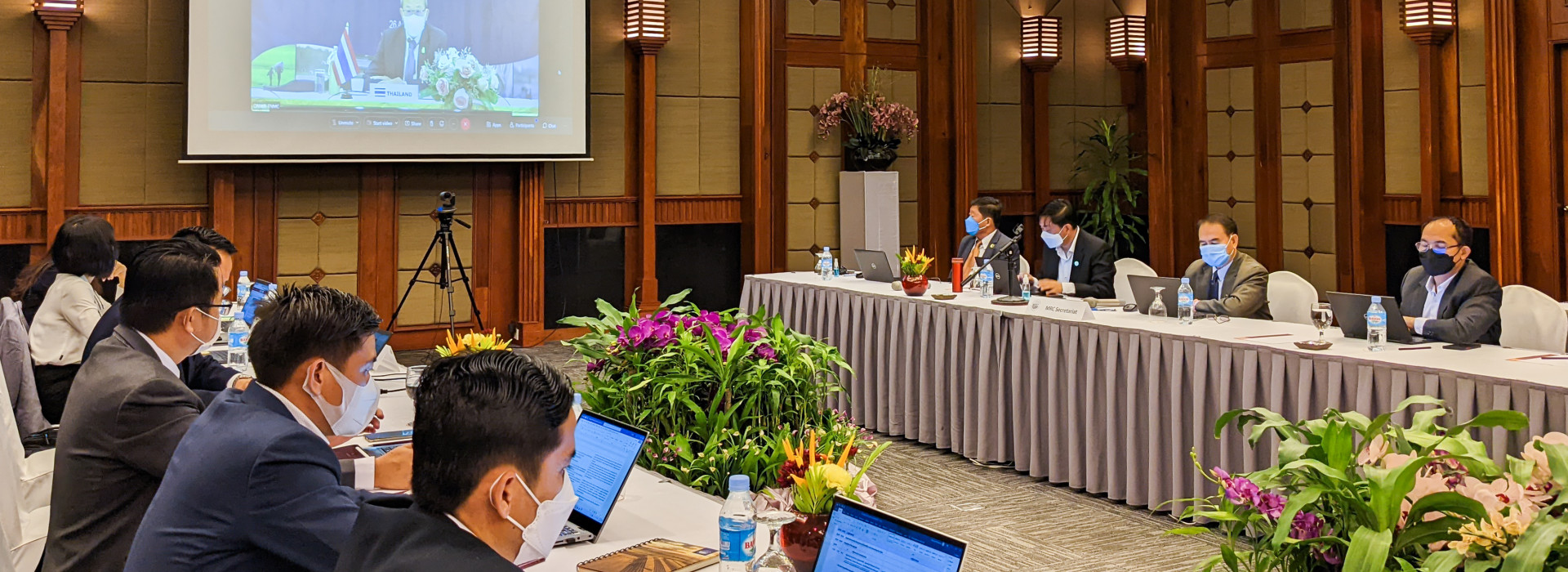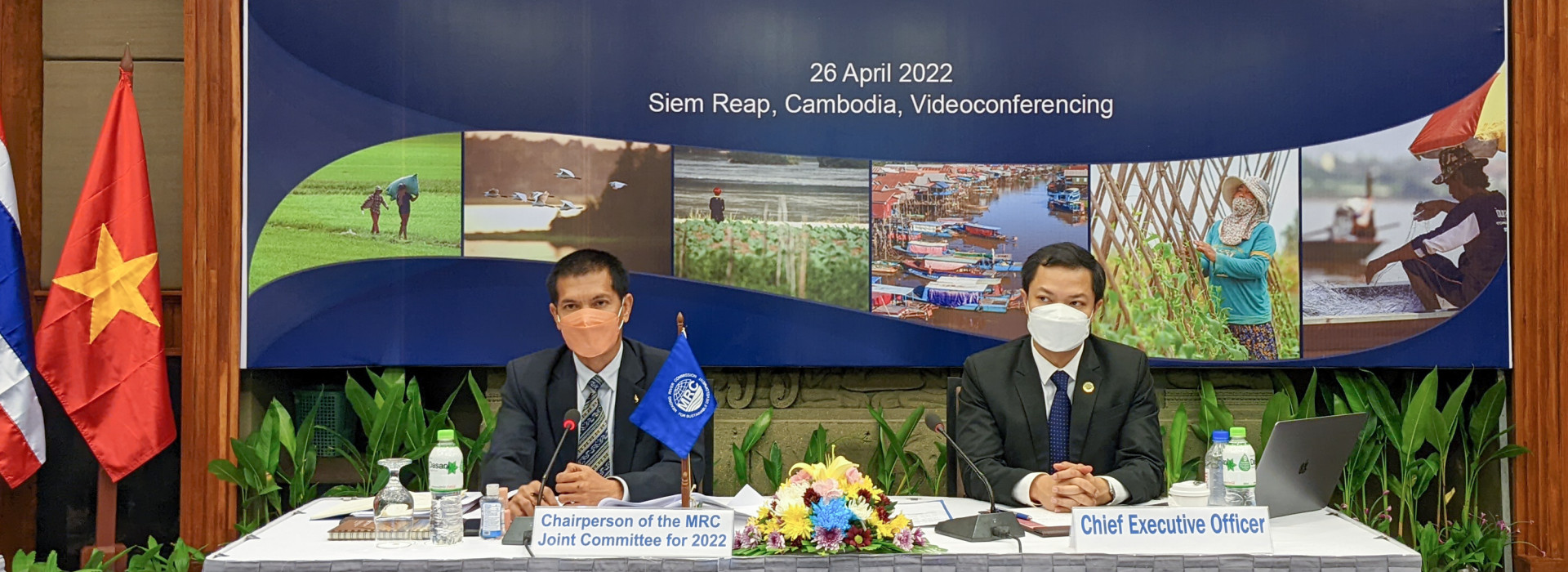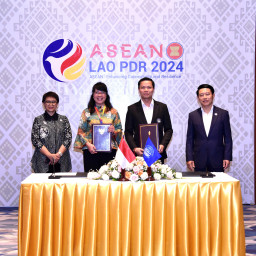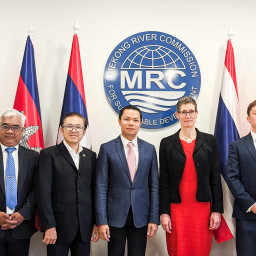MRC Joint Committee takes action on accountability, water-usage monitoring
Siem Reap, Cambodia, 28 April 2022 — The Mekong River Commission’s governing body approved new operational procedures on Tuesday that will ensure greater transparency and accountability in how the intergovernmental agency – which is entrusted to steer river-protection efforts – then spends its funding from members and donors.
Moreover, the MRC Joint Committee moved one step closer to creating a new system that for the first time will monitor and report water usage on Southeast Asia’s largest river, by the four Member Countries: Cambodia, Lao PDR, Thailand and Viet Nam.
At the moment, the more significant action of the two taken by the Joint Committee – which is composed of representatives of each of the four Member Counters – was the approval of updated rules for MRC procurement, data-protection and financial transactions.
The new rules are part of the organization’s broader institutional reforms. These reforms, which began in 2016, include the gradual evolution into an organization that is entirely run – and staffed – by Mekong citizens themselves.
The approved procedures enshrine many of the recommendations by an international legal and auditing team, which was commissioned in June 2020.
“We use public funds, so it’s important that we be transparent and accountable for the funds we receive,” said the Joint Committee Chairperson for 2022, Sophort So, at the biannual meeting. “This approval enables us to be both.”
As for water-usage, the Mekong is a beleaguered waterway after four straight years of low-flow, spurred by a combination of climate change, drought and usage by various water-infrastructure projects. Anoulak Kittikhoun, CEO of the MRC Secretariat, has even felt compelled to sound the alarm about its health, at a recent event to mark “Mekong Day.” On the bright side, though, 2022 has already seen more rainfall during its first three months, which may signal a wetter year ahead.
Water-use monitoring – and accurate water data – are considered essential to crafting the best-possible policies, around the world. According to UN Water, it’s not just a wise path toward achieving UN Sustainable Development Goal #6, on clean water, but can bring numerous other benefits:
“Credible water sector data will underpin advocacy, stimulate political commitment and public and private investments, inform decision-making at all levels and trigger well-placed investment targeted towards optimum health, environment and economic gains.”
Regarding the Lower Mekong River Basin, the MRC Ministerial Council actually approved the Procedures for Water Use Monitoring back in 2003. However, as the Joint Committee document notes: “Progress in implementing PWUM has been slow.” The stated reason is that the MRC Secretariat “has hitherto limited access to actual water use data or information in riparian countries, as stipulated in the agreed procedures.”
However, representatives of the four countries have now endorsed a monitoring and reporting system to “improve understanding of the water resource status, water uses and users, and enable decisions that enhance the equitable and sustainable management of water.”
“We can’t manage what we can’t measure,” said Kittikhoun, following the meeting. “Having this data is important, as it will arm Member Countries with information they can use and base their decisions upon. That also means we’ll be using the Mekong waters more responsibly.”
With this document’s fresh approval, the next step is for the MRC Secretariat to test out the new system, by preparing and launching pilots within the four Member Countries.
In other news, beyond those two approvals, the Joint Committee took several other actions: It recognized new guidelines for how to implement MRC Procedures for water utilization, like defining what constitutes “reasonable and equitable use” of Mekong waters. Or, how to determine if “substantial damage” from usage has occurred – and what should be done about it.
Lastly, the Committee noted the progress made in the final stretches of the “Prior Consultation” process, for the proposed Sanakham hydropower project – which is the 6th in the “cascade of run-of-river projects” in the LMB. This progress includes bilateral discussions between Lao PDR and Thailand, with the MRC Secretariat serving as facilitator. The Committee also agreed to task its working group to look at the proposed Phou Ngoy project, which was submitted to the MRC in October 2020, as the 7th hydropower project in the LMB.
Note to Editors:
The MRC is an intergovernmental organization established in 1995 to boost regional dialogue and cooperation in the Lower Mekong River Basin. Based on the Mekong Agreement among Cambodia, Lao PDR, Thailand and Viet Nam, the MRC serves as both a regional platform for water diplomacy and a knowledge hub – to manage water resources and support sustainable development of the region.
###
